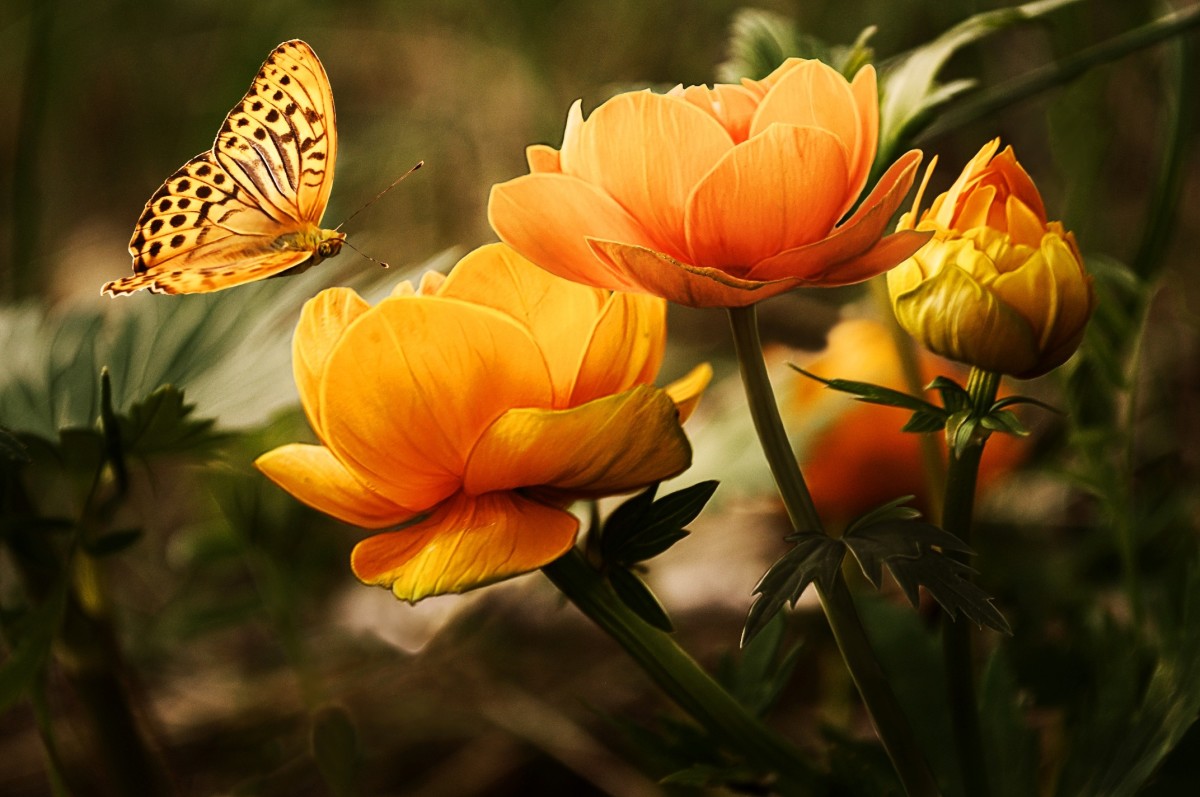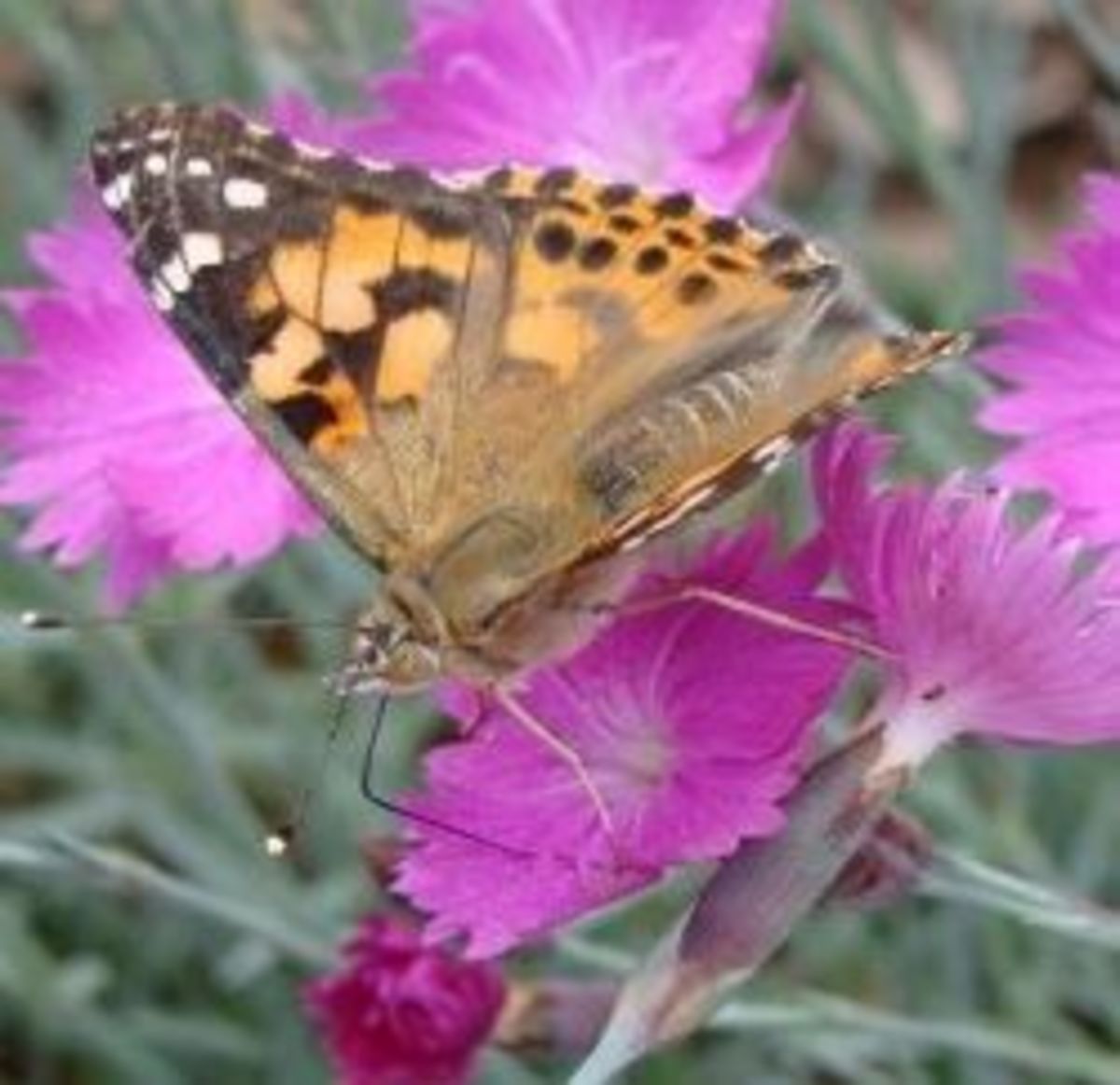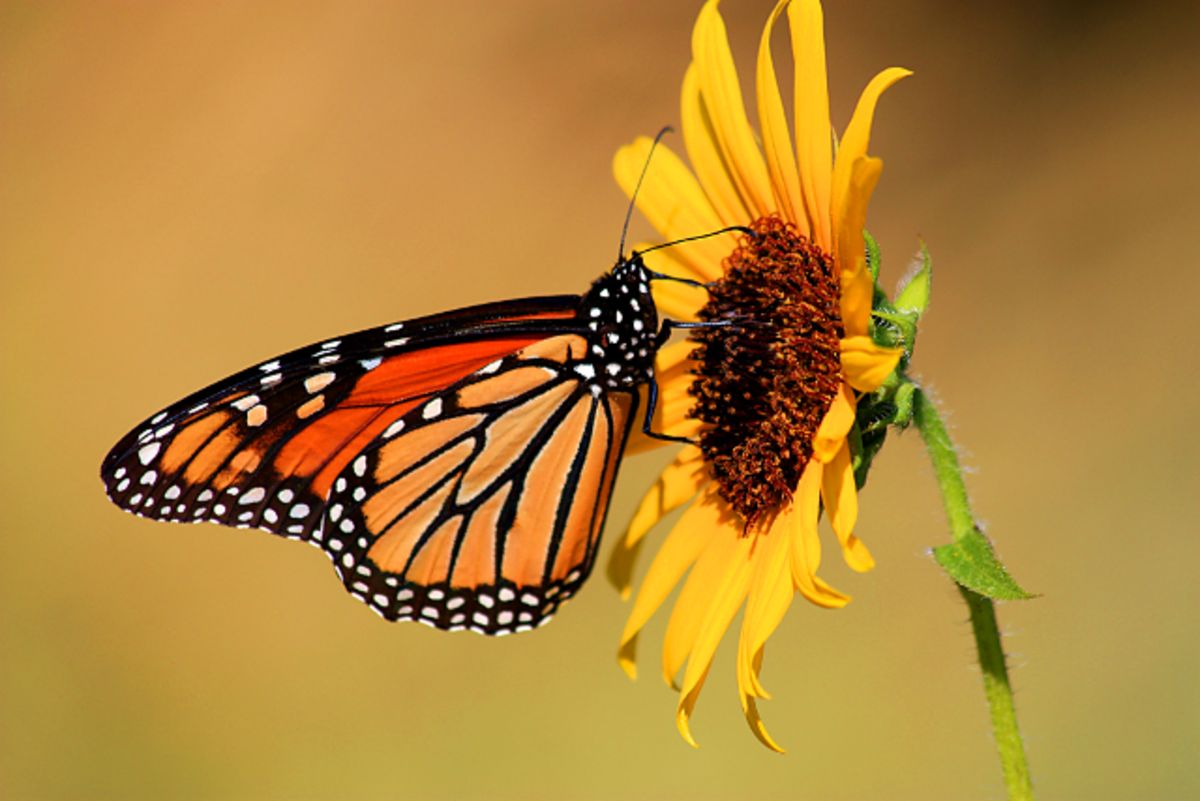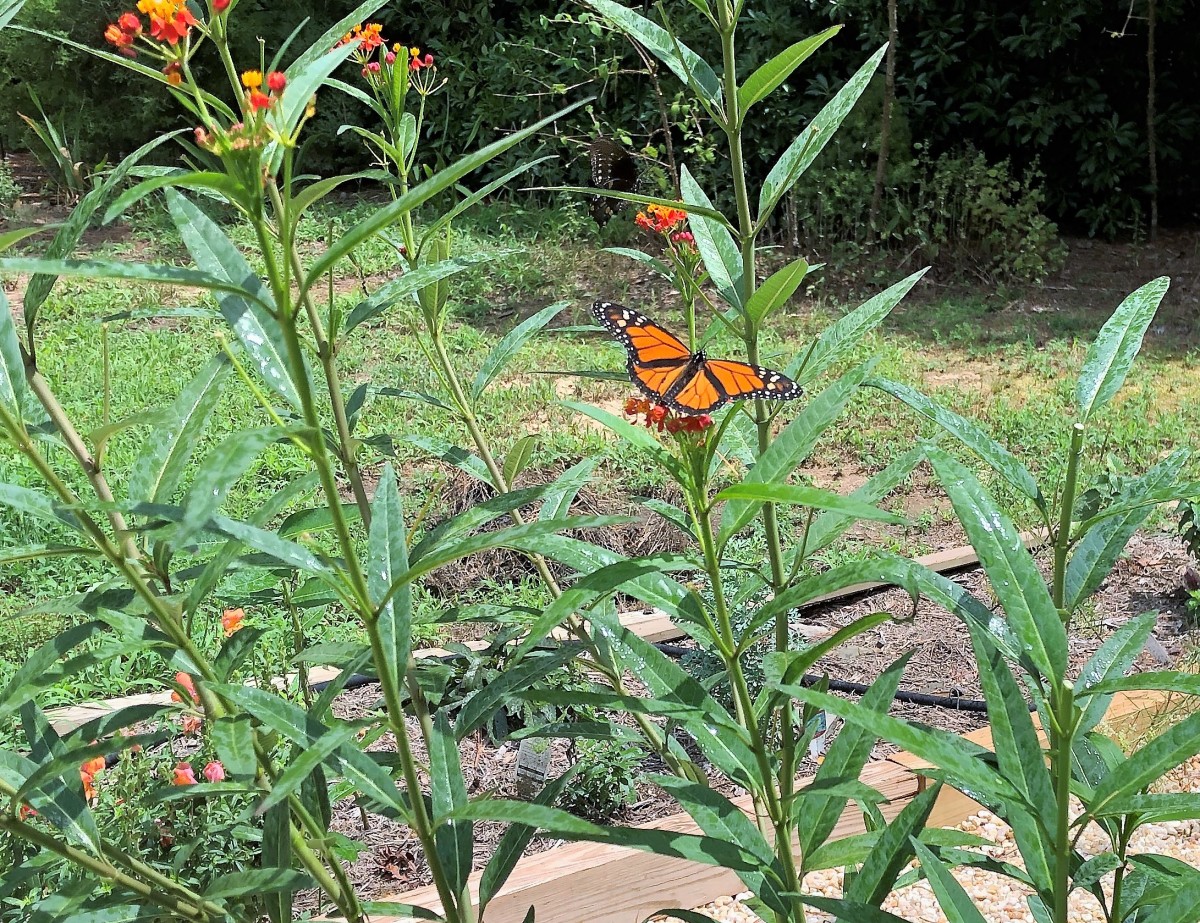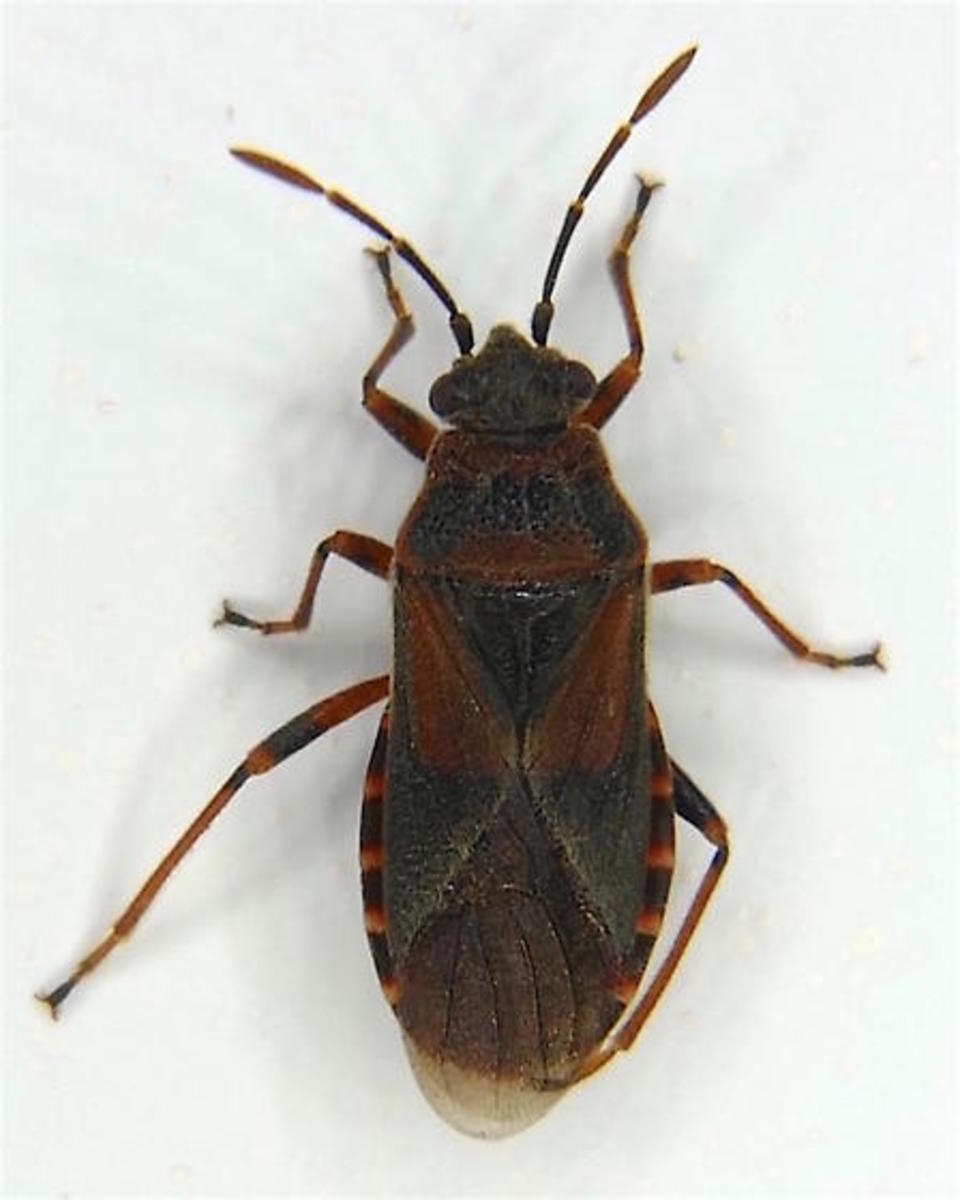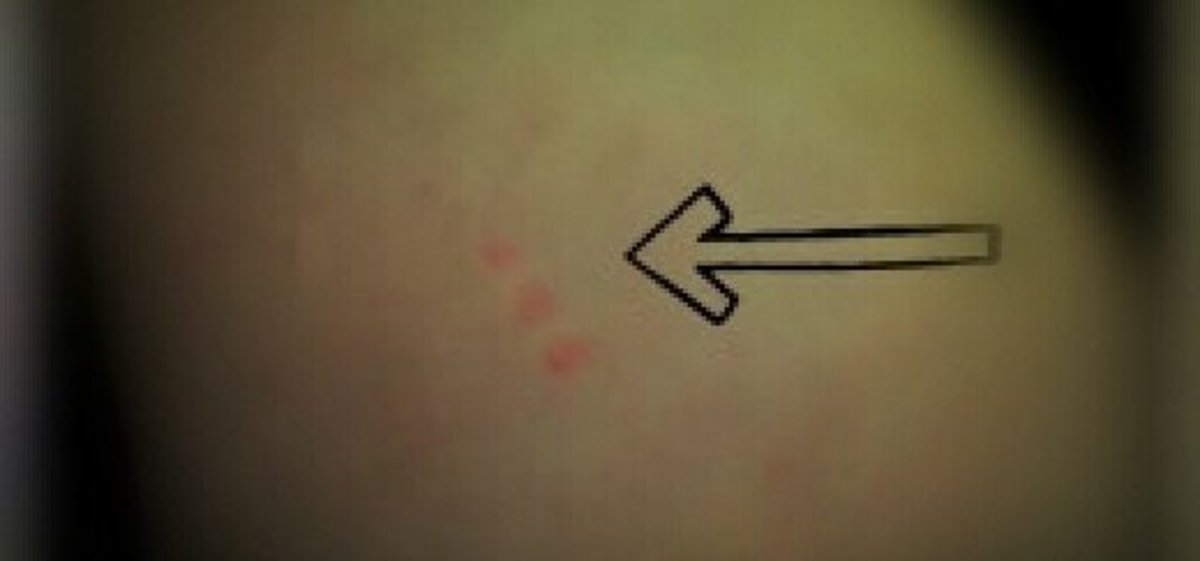- HubPages»
- Education and Science»
- Life Sciences»
- Entomology
Beautiful Butterflies
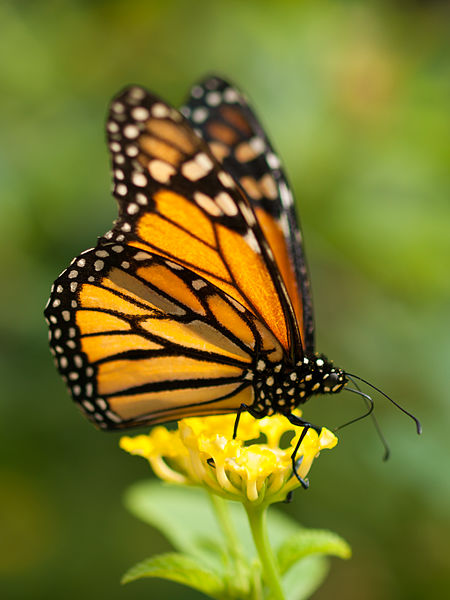
I just love butterflies in my garden, not that I see a lot these days.
I have more wasps flying around than anything else, I believe the wasps are destroying the insect life, like the bee hives which they killed off last season.
The Monarch Butterfly is one of the best of butterflies in my garden, they are so beautiful, even if they eat all my swan plants.
Amazing Life Cycle of a Monarch Butterfly
Butterflies are not as plentiful in the garden like they used to be, by planting the Asclepias curassavica seeds in your garden as it is part of the milkweed family, and exudes a milky sap from the stem and leaves when cut. Monarch butterflies lay their eggs on this plant, and the resulting larvae use the plant leaves as a food source.
Although it is nice to see the butterflies, there is a warning, all milkweeds are poisonous if ingested, and the milky sap is a skin irritant. The butterflies whose caterpillars feed on milkweeds contain the same poisonous glycosides and are poisonous as well.
But sometimes to keep these butterflies from going instinct we need to help feed the caterpillars.
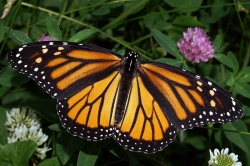
Monarch Butterflies.
About ten years ago I planted some Swan Plants (Asclepias).
Yes you have to believe it, I had an evasion of Monarch Butterflies, they laid their eggs on my swan plants, I was so happy those beautiful butterflies flying around in my garden, until a few weeks later, I was so surprised.
What's happen to my Swan Plants?
Yes no leaves and caterpillas everywhere with nothing to eat.
I was told, you can feed them pumpkin, which I did, well some survive and some did not, but there was no swan plant for them to eat they had eaten all of it.
I brought a lot of the caterpillers inside, that formed a pupae (turn into chrysalis) and some did hatch and where let go outside when they could fly, that was a soon as their wings dried enough, the door was opened and away they flew.
The photo I have at the top is one of them, that never flew.
I have now had this one for over ten years in my china cabinet and it is as beautiful today as he was when it hatch out of it's chrysalis.
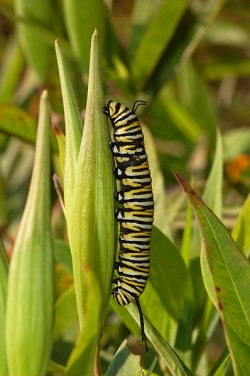
About Monarch Butterflies
The eggs are creamy white and later turn pale yellow.
The eggs hatch (after 4 days), revealing worm-like larvae, the caterpillars.
During the caterpillar stage, monarchs store energy in the form of fat and nutrients to carry them through the non-feeding pupa stage. The caterpillar stage lasts around 2 weeks.
The chrysalis is blue-green with a band of black and gold on the end of the abdomen.
Just before the butterfly emerges,its orange and black wings can be seen.
The mature butterfly emerges after about two pupal weeks and hangs from the split chrysalis for several hours until its wings are dry.
Monarchs Butterflies can live a life of two to eight weeks in a garden, if they sufficient flowers for nectar.
Did You Know?
The swan plant's milky sap is full of toxins that transfer to monarchs when they eat it.
This act protects the caterpillars from birds and other predators, who recognise that their distintive colours mean poison.
Butterfly
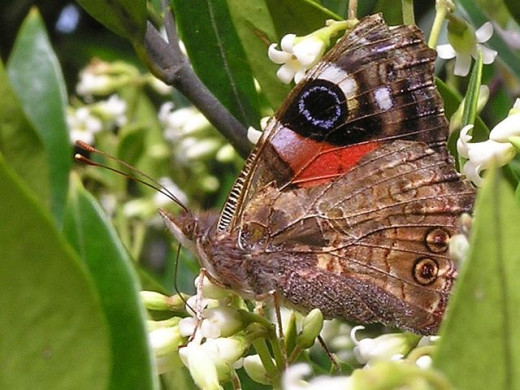
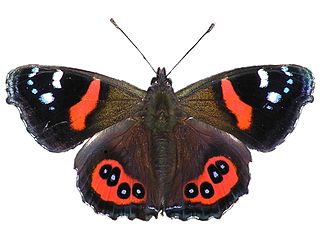
New Zealand Red Admiral Butterfly
New Zealand Red Admiral Butterfly, Maori name is kahukura which means red cloak.
The above photo is showing eyespot on the underside of the forewing, (rear wing edge is damaged so more than usual of the eyespot can be seen here).
Actually, the Red Admiral Butterfly being so beautiful, it is hard to believe that one of their main food to eat is the Urtica ferox, commonly known as Ongaonga, it is a nettle that is endemic to New Zealand.
Sometimes known as the 'tree nettle' which is everywhere on the bush land, when you are walking, you just make sure you do not touch it.
It is a medium sized butterfly with a 50-60mm wingspan.
The top side of the forewings is basically black with a central bright red bar running back from the front edge.
There are white spots, fringed with light blue, near the tips.
The rear wings are more a dark reddy brown with a red area containing four black circles.
The centre of each circle is pale blue.
The underside of the rear wings is a mottled collection of shapes and white, brown, black colours - very camouflaged when at rest.
A very beautiful butterfly but they do well in East Taranaki Bush, plenty of food for them.
showing eyespot on underside of forewing (rear wing edge is damaged so more than usual of the eyespot can be seen here)
The Food That Red Admiral Butterfly Eat.

Sometimes known as the 'tree nettle', ongaonga has woody stems and unusually large stinging spines, and can grow 5 metres tall.
Even the lightest touch can result in a painful sting that lasts several days.
Ongaonga is the main food plant for larvae of the New Zealand Red Admiral Butterfly or Kahukura eat.
There has been one recorded human death from contact-a lightly clad hunter who died five hours after walking through a dense patch, so it seems strange that this is the main food the the Red admiral butterfly eats.
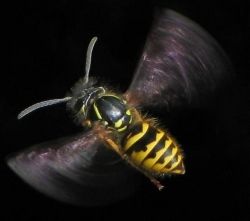
Little about those pesky wasps
It does not matter how many wasps nest you destroy, those wasp just keep on coming back year after year, my guess is that the wasps are eating the caterpillars before the butterflies have a chance in life.
I did a studyed about those pesky wasps I find out that Colonies usually last only one year, with all but the queen dying at the onset of winter.
New queens and males (drones) are produced towards the end of the summer, and after mating, the queen overwinters in a hole or other sheltered location, sometimes in buildings.
Wasp nests are not reused from one year to the next.
So What I need to do, is now find that pesky Queen wasp in the winter.
Most likely living in my home in the roof, keeping warm, from the heat, of the chimney from the fireplace.
European beewolf carrying a honeybee towards its tunnel. Captured in The New Forest, England.
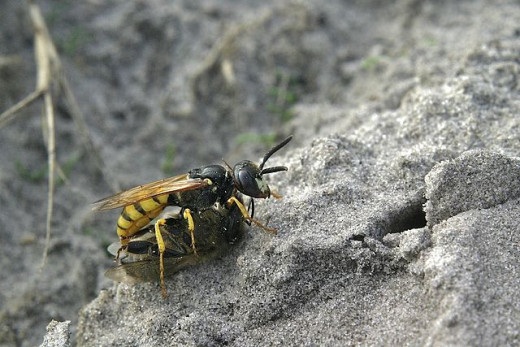
The Life Cycles of Butterflies: From Egg to Maturity, a Visual Guide to 23 Common Garden Butterflies

© 2011 Elsie Hagley


